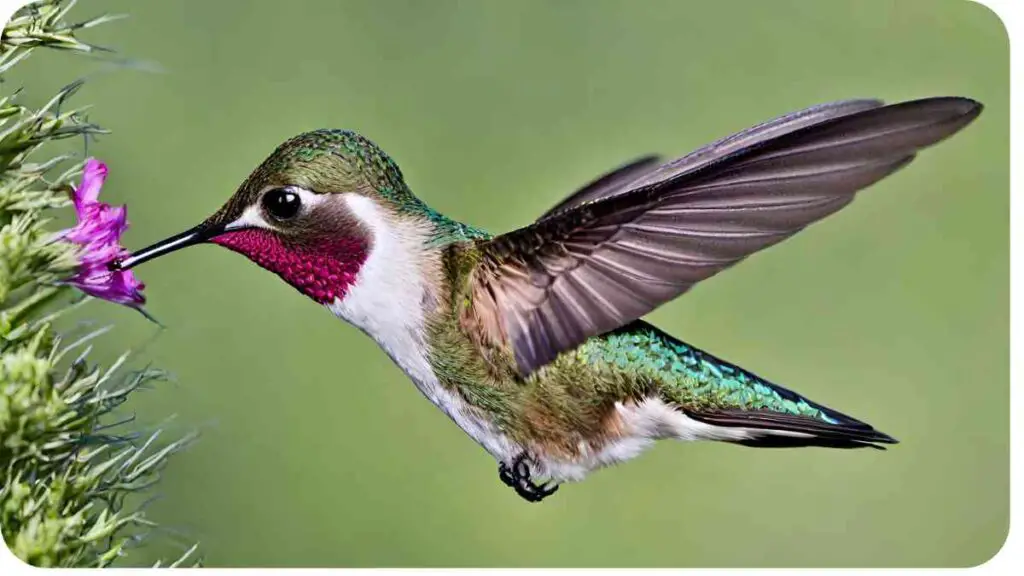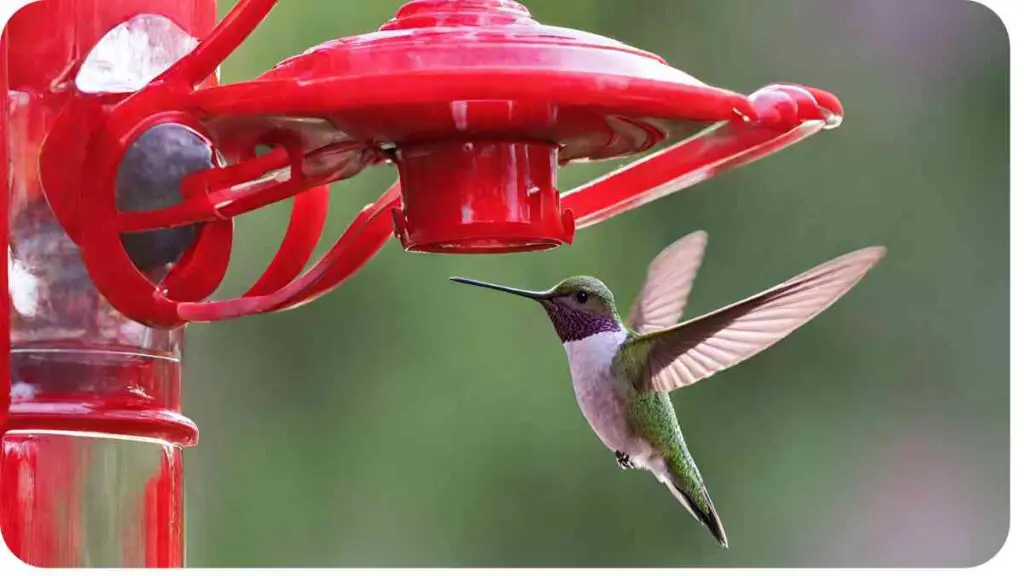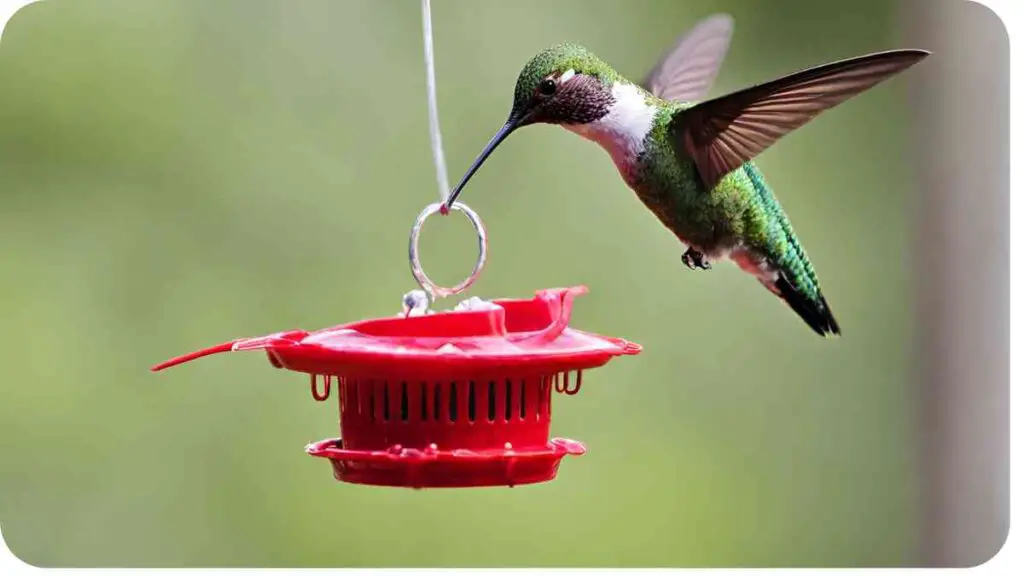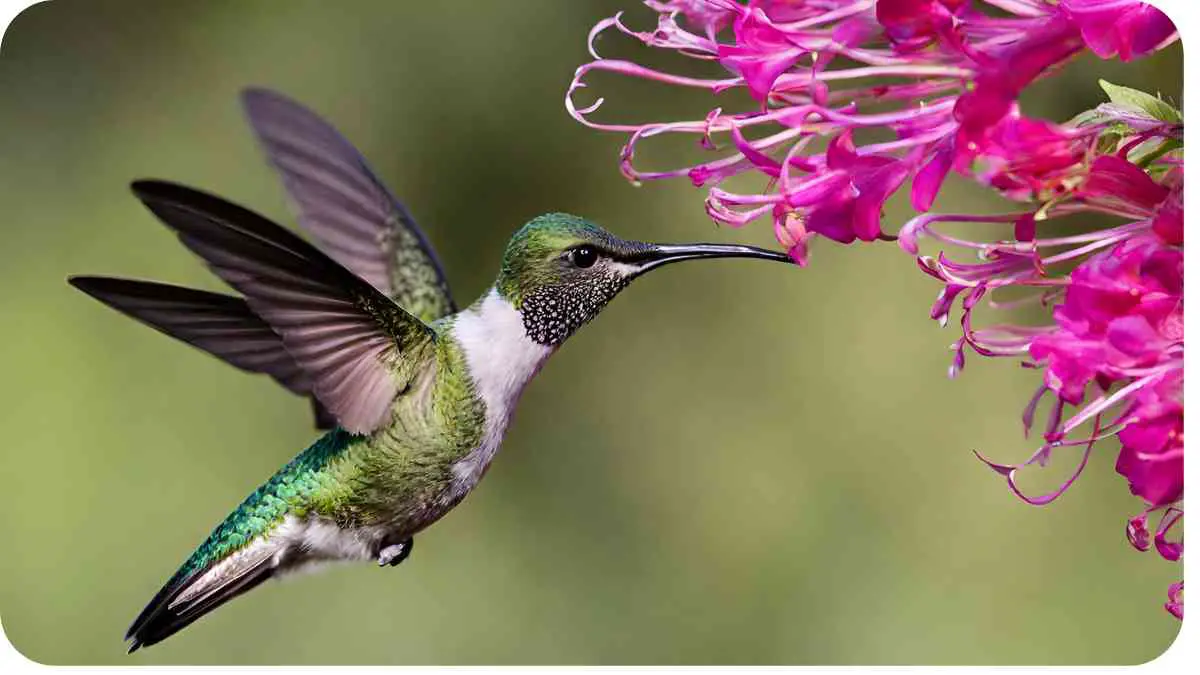Hummingbirds are among the most captivating creatures in the natural world. Their iridescent plumage, astonishing agility, and delicate beauty make them a joy to behold. But beyond their visual appeal, these tiny avian marvels play a crucial role in our ecosystem as pollinators.
One of the best ways to attract hummingbirds to your garden is by providing them with a steady supply of their favorite food: nectar from flowers. In this article, we’ll explore the fascinating world of hummingbirds, their dietary preferences, and how you can create a garden that will entice these flitting pollinators.
2. Understanding Hummingbirds

Hummingbirds belong to the family Trochilidae and are native to the Americas. With over 300 species, these diminutive birds exhibit a remarkable diversity in size, coloration, and behavior. Some of the most common species include the Ruby-throated Hummingbird (Archilochus colubris), Anna’s Hummingbird (Calypte anna), and Rufous Hummingbird (Selasphorus rufus).
Understanding the intricacies of underground septic tanks is crucial for residential yard management. Proper knowledge ensures efficient function and maintenance, promoting a healthy environment for both flora and fauna.
Table: Common Species of Hummingbirds
| Species | Size (inches) | Range |
|---|---|---|
| Ruby-throated | 3.0 – 3.5 | Eastern United States and Canada |
| Anna’s | 3.5 – 4.0 | Western United States and Canada |
| Rufous | 3.5 – 4.0 | Western United States, Alaska, and Canada |
| Broad-tailed | 3.0 – 4.0 | Western United States and Canada |
| Black-chinned | 3.5 – 4.0 | Western United States and Mexico |
| Calliope | 3.0 – 3.25 | Western United States and Canada |
3. Hummingbird Diet: What Flowers Do They Eat?
Hummingbirds have a unique dietary requirement due to their high metabolism and energetic lifestyle. While they do consume small insects for protein, their primary source of nutrition comes from flower nectar. However, not all flowers are equally attractive to hummingbirds. They have specific preferences when it comes to nectar production, flower shape, and color.
Table: Flowers Preferred by Hummingbirds
| Flower | Nectar Production | Color | Shape |
|---|---|---|---|
| Trumpet Vine | High | Orange/Red | Trumpet-shaped |
| Bee Balm | High | Red | Tubular |
| Salvia | High | Red/Purple | Tubular |
| Fuchsia | High | Red/Purple | Bell-shaped |
| Coral Honeysuckle | High | Red/Yellow | Tubular |
4. Creating a Hummingbird-Friendly Garden

Now that we understand the dietary preferences of hummingbirds, let’s discuss how to design a garden that will attract these delightful creatures. Creating a hummingbird-friendly garden involves selecting the right plants, providing suitable feeding stations, and ensuring a welcoming environment.
Before planting acorn trees, explore the pros and cons to make informed decisions. Understanding their benefits and drawbacks aids in landscaping choices, ensuring the suitability of these trees for your yard’s ecosystem.
Table: Plants to Attract Hummingbirds
| Plant | Height (inches) | Flower Color | Bloom Time |
|---|---|---|---|
| Red Hot Poker (Kniphofia) | 24-48 | Red, Orange, Yellow | Summer |
| Cardinal Flower (Lobelia cardinalis) | 24-36 | Red | Summer |
| Penstemon (Penstemon spp.) | 12-36 | Red, Pink, Purple | Spring – Fall |
| Hummingbird Mint (Agastache) | 18-36 | Red, Pink, Purple | Summer – Fall |
| Columbine (Aquilegia spp.) | 12-36 | Red, Pink, Yellow | Spring |
5. Planting Strategies for Hummingbirds
When planting your garden, consider the following strategies to maximize its appeal to hummingbirds:
- Diversity: Include a variety of flowers that bloom at different times throughout the year to provide a continuous food source.
- Color: Choose flowers in shades of red, orange, and pink, as these colors are most attractive to hummingbirds.
- Shape: Select flowers with tubular or trumpet-shaped blooms, which are easier for hummingbirds to access with their long, specialized bills.
- Location: Plant flowers in clusters or drifts to create visual impact and make it easier for hummingbirds to find them.
- Shelter: Incorporate shrubs and trees into your garden to provide perches and shelter for hummingbirds.
Unlock your creativity and explore new possibilities with unique floral arrangements. Break away from traditional bouquet styles and discover innovative ways to showcase flowers, adding a personal touch to your floral displays.
6. Maintaining Your Hummingbird Garden
Once your garden is established, proper maintenance is essential to keep it attractive to hummingbirds. Here are some tips for garden care:
- Watering: Keep the soil consistently moist but not waterlogged, especially during hot weather.
- Deadheading: Remove spent flowers regularly to encourage continuous blooming and nectar production.
- Fertilizing: Use a balanced fertilizer to promote healthy growth, but avoid over-fertilizing, which can lead to excessive foliage at the expense of flowers.
- Pest Control: Monitor for pests such as aphids and caterpillars and take appropriate action to prevent damage to your plants.
Indulge your senses with the delightful fragrances of flowers that smell good. From roses to jasmine, explore a variety of scents that add an extra dimension of enjoyment to your garden and outdoor spaces.
7. Tips for Attracting Hummingbirds Year-Round

To attract hummingbirds year-round, consider the following tips:
- Provide Shelter: Create sheltered areas in your garden with dense foliage and perching spots where hummingbirds can rest and seek refuge from predators and inclement weather.
- Install Feeders: Supplement natural nectar sources with hummingbird feeders filled with a sugar water solution (4 parts water to 1 part sugar). Clean feeders regularly to prevent mold and bacteria buildup.
- Plant Evergreens: Incorporate evergreen trees and shrubs into your garden to provide year-round cover and nesting sites for hummingbirds.
- Offer Nesting Materials: Hang bundles of nesting materials such as twigs, grass, and spider silk in your garden to provide building materials for hummingbird nests.
- Avoid Pesticides: Minimize pesticide use in your garden, as these chemicals can harm hummingbirds directly or indirectly by reducing insect populations, their primary source of protein.
Experience the joy of a perpetual floral display with flowers that bloom all year. Discover plants that thrive in every season, bringing color and vibrancy to your garden year-round, creating a picturesque oasis of natural beauty.
8. Conclusion
Attracting hummingbirds to your garden can be a rewarding experience that brings beauty, joy, and ecological benefits. By understanding their dietary preferences and creating a welcoming habitat, you can encourage these flitting pollinators to visit your garden regularly. Whether you’re a seasoned gardener or a novice enthusiast, cultivating a hummingbird-friendly garden is a delightful way to connect with nature and contribute to conservation efforts.
Further Reading
- The Surprising Science Behind Hummingbirds and Flowers: Explore the intricate relationship between hummingbirds and flowers, delving into the fascinating scientific discoveries that explain their unique behaviors.
- 10 Must-Have Flowers for Attracting Hummingbirds: Discover a curated list of flowers that are irresistible to hummingbirds, along with tips on how to cultivate them in your garden for maximum impact.
- Flowers That Attract Hummingbirds: The Ultimate Guide: Dive into this comprehensive guide to learn about a wide variety of flowers that attract hummingbirds, along with helpful insights on how to create a hummingbird-friendly garden.
FAQs
What are the best flowers for attracting hummingbirds?
The best flowers for attracting hummingbirds are those that produce abundant nectar and have bright, tubular blooms. Examples include trumpet vine, bee balm, salvia, fuchsia, and cardinal flower.
When is the best time to plant flowers to attract hummingbirds?
The best time to plant flowers to attract hummingbirds is in the spring, after the last frost has passed. This allows the flowers to establish themselves before the hummingbirds return from their winter migration.
How often should I refill my hummingbird feeder?
Hummingbird feeders should be refilled with fresh nectar every 3 to 5 days, depending on the temperature and activity level of the hummingbirds in your area. In hot weather, you may need to refill them more frequently to prevent spoilage.
Is it necessary to use red-colored nectar in hummingbird feeders?
No, it is not necessary to use red-colored nectar in hummingbird feeders. While hummingbirds are attracted to the color red, the dye used in some commercial nectars may be harmful to their health. Plain sugar water (4 parts water to 1 part sugar) is sufficient to attract hummingbirds to your feeder.
How can I prevent bees and wasps from swarming my hummingbird feeder?
To deter bees and wasps from swarming your hummingbird feeder, try placing a wasp guard or bee guard over the feeding ports. Additionally, consider using feeders with bee-resistant designs, such as those with built-in bee guards or saucer-shaped feeding ports. Regular cleaning of the feeder to remove any spilled nectar can also help reduce bee and wasp activity.

I am Hellen James, a landscape architect. For many years I have written about landscaping for various publications; however, recently decided to focus my writing on personal experience as a profession.

